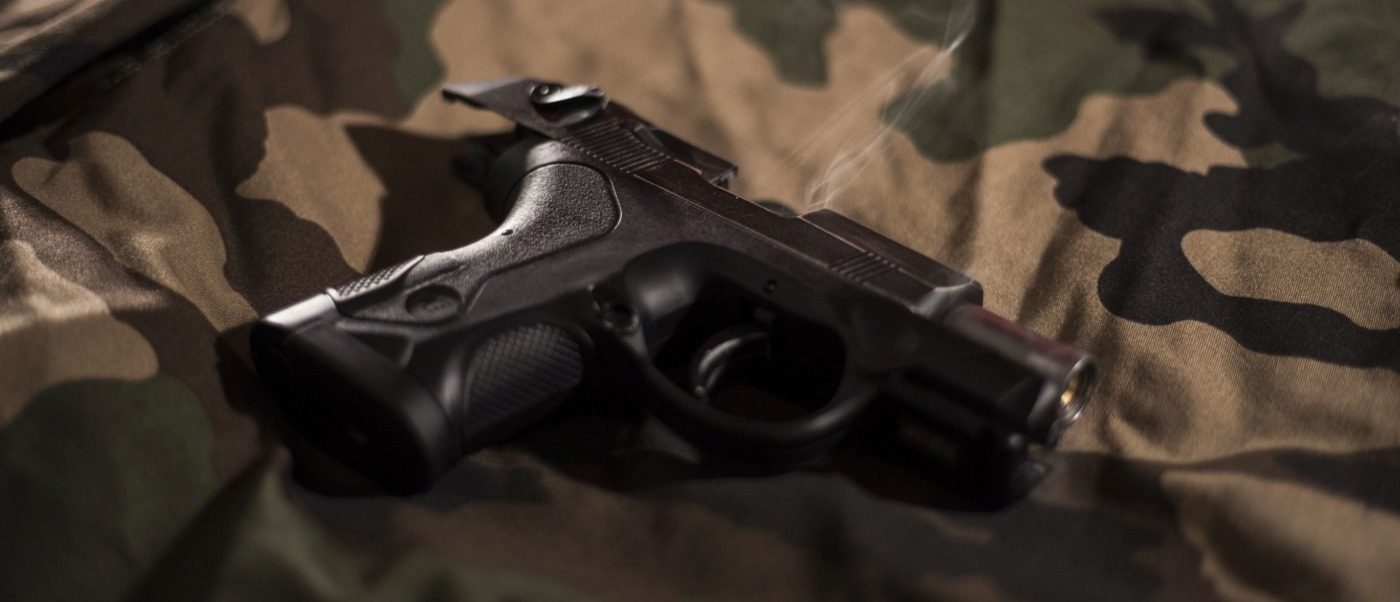Arming teachers with pistols, pens or both
It is safe to say that the debate on guns is ever more present in society, with the US government considering a plan to equip teachers. In fact, if you type ‘Should teachers…’ into Google, the top suggestion is ‘Should teachers be armed?’.
President Trump recently sparked division across the spectrum when he said he would consider a proposal to arm teachers with handguns as a way to deter school shooters. Many educators felt uneasy about taking such a stance. However, teachers are taking action to carry concealed weapons, as reported by the The Telegraph in July.
A non-profit organisation, FASTER, which was set up after the deaths of 20 children at Sandy Hook Elementary School, has trained approximately 1,300 staff on how to use handguns in the event of a shooting. 63 teachers have been trained in Colorado, home to the Columbine High School shooting in 1999. Colorado law itself currently prevents anyone from carrying firearms onto school grounds, except for security guards and school resource officers.
63 teachers have been trained in Colorado, home to the Columbine High School shooting in 1999
The curriculum includes basic handgun knowledge, casualty care tactics, and role-playing with simulated fire. It is hoped that such training can eventually allow districts, such as Colorado, to change their minds about the way weapons are carried. Those who pass the requirements in handgun proficiency will have been trained to the same level as graduating police officers.
America’s gun epidemic kills roughly 33,000 per year, with the Washington Post database confirming that around 214,000 students have experienced a US school shooting in the last 19 years. Therefore, it is not a topic to debate lightly and tension has been found between gun control advocates and their critics. The US is the only developed country in the world that suffers relentless school shootings, with the statistics equalling out to one every week, according to Every Town for Gun Safety.
Arguments for the implementation of guns for teachers include district estimates stating it takes law enforcement 20-25 minutes to respond to an incident. This worrying statistic is at odds with Columbine’s massacre, in which 13 people were killed in under eight minutes. Evan Todd, a survivor of the shooting, is one who believes there would have been fewer deaths if teachers had been armed.
This worrying statistic is at odds with Columbine’s massacre in which 13 people were killed in under eight minutes
A constitutional argument, based on the Second Amendment, is that US citizens have the right to bear Arms as a “well-regulated Militia … necessary to the security of a free State…”. So, to some the execution of further gun control, or the prohibition of allowing teachers to carry, would come as a violation against the Constitution itself. However, it is worth noting that the Amendment was adopted in 1791, as part of the Bill of Rights, and so its archaic nature may be reason alone to rethink the boundaries of gun control. This comes alongside the lengthy discussion as to the conscious scope of the Amendment to begin with.
One voice against arming teachers is Tom Mauser, a spokesman for Colorado Ceasefire, which is a political committee advocating for stricter laws. “I do understand how it can be a tougher issue in our very rural areas,” said Tom whose son, Daniel, died at Columbine. Moreover, in a moving article by Stephanie Saul of The New York Times, a former assistant principal discusses how he once detained a campus gunman, armed, and yet he is still against the idea of it. Joel Myrick, who worked at a Pearl High School in Mississippi said: “Teachers have to teach, and that’s what they should be doing. It doesn’t matter what a pistolero you are, or think you are. You don’t need to be in school in charge of protecting children”. Those who are against the concept argue that it places an unfair burden on teachers and their mental health, and the topic of discussion should instead focus on what type of guns should not be available to the public.
Teachers have to teach, and that’s what they should be doing
A valid point has been raised by Andre Fouque, a 16-year-old student. He said: “Would police be able to differentiate who had the gun [if we were to arm teachers]? The teacher would be the first person to get shot. We should leave that to the police”. Issues over gun laws are not contested solely in the United States. The Port Arthur massacre in Australia, as well as the Dunblane School massacre in the UK, have left people finding it hard to understand the logic of adding more guns into the situation than promoting the idea of fewer guns.
It goes without saying that it is difficult to find an equilibrium when it comes to such a controversial topic, amid a society vastly different in culture and ethics. With the average wage of a teacher in places such as Colorado ($46,506) and Florida ($49,407) what it is, it would appear unjustifiable to burden them with such a responsibility, and even if it were to be increased the toll it could take on their mental health could be substantial. But for those teachers who wish to carry a concealed weapon, there is the justifiable question of why not? If trained to a similar level as law enforcement, perhaps lives could be saved by those ready and willing to commit. It is a topic which provokes a lengthy amount of questions, but so far little in the way of answers.

Comments